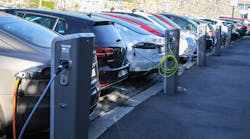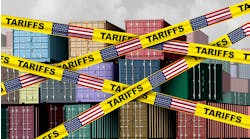The UAW Strike Is a Test Case for Biden-omics
IndustryWeek's elite panel of regular contributors.
As the United Auto Workers strike continues, it will have a cascading effect from the auto makers to their upstream suppliers providing EV batteries and other components.
The economic cost of the first week of the strike was $1.6 billion, and there is no end in sight. Also, the scope of this strike goes beyond the auto supply chain; it affects decisions from the factory floor to the White House.
On September 22, the UAW expanded its strikes to 38 parts and distribution locations across 20 states. Immediately following this news, President Joe Biden agreed to join the United Auto Workers on the picket line on September 26.
This is an extraordinary display of Biden’s support for the union's strike against the nation's three largest automakers. However, beneath the surface, this strike is an important test case for the effectiveness of Bidenomics that can affect his re-election in 2024.
As Biden joins the strikers on Tuesday, he is walking a tightrope between supporting the union workers with higher pay and improving the competitiveness of the electric vehicle industry.
Since President Biden took office in January 2021, his Bidennomics has focused on rebuilding the middle class and creating more higher paying jobs across the nation. His economic vision includes making smart public investment and promoting competition to lower costs.
Fueled by the $2 trillion coffer generated from the Bipartisan Infrastructure Law (BIL), the CHIPS & Science Act and the Inflation Reduction Act (IRA), Biden has put together the largest program of public investment in the American economy in many decades. This investment program is designed to improve manufacturing capability and capacity in semi-conductors and electric vehicles.
The program is making good progress. Construction spending for manufacturing facilities has doubled since the end of 2021, mostly for computers, electronics and electrical goods. Also, since 2021, the United States has added more than 13 million jobs, including nearly 800,000 manufacturing jobs. And the unemployment rate reached a historic low of 3.7%.
Low unemployment benefits the economy and society with higher incomes, lower poverty, more consumer spending, more tax revenue and fewer social problems. However, a low unemployment rate can also create drawbacks: inflation, labor shortages, wage pressures, lower productivity and reduced competitiveness.
Currently, labor shortages are creating challenges for manufacturing firms to expand. For example, due to a skilled worker shortage in the semiconductor industry, chipmaker TSMC announced that the opening of its $40 billion chip fab in Arizona will be postponed to 2025.
Labor shortages increase the bargaining power for workers to demand higher wages and better working conditions with the employers. The UAW strike is case in point.
From the auto workers’ perspective, it is the right time to negotiate a better contract for three major reasons.
First, putting aside the UAW’s current demands for a 40% wage increase over four years and a 32-hour workweek, it is reasonable for workers to demand a fair share of the record profits the auto companies have made in recent years. This seems fair,especially when tens of thousands of workers were laid off during the 2009 financial meltdown.
Second, as U.S. automakers are developing and producing more electric vehicles (EVs), there will be major changes in plant locations and labor skills. These eminent changes create concerns over job security, especially for older workers. As such, it is understandable for the UAW to demand better benefits and job security.
Third, Bidenomics protects car manufacturing jobs in the U.S. To stimulate the green economy, Biden set a goal of making EVs 50% of vehicle sales by 2030. To provide incentive for domestic production, the $7,500 tax credit for EV purchases is subject to country-of-origin rules that depend on the percentage of components and critical minerals sourced from the U.S.
To protect car manufacturing jobs, the USMCA stipulates that at least 75% of auto contents must be made in North America—and 40-45% made by workers earning at least $16 per hour—to avoid tariffs on importing a car from Mexico to the United States. Because Mexican workers earn much less than $16 per hour, these rules are intended to support better jobs for U.S. producers and workers. Therefore, there is a strong disincentive for U.S. automakers to shift more jobs to Mexico.
With Biden joining the picket line, the stars are aligned for the UAW to negotiate higher pay and more job security.
If the UAW wins much of what they are asking for and the strike ends soon, then the selling price of GM, Ford and Stellantis cars will surge due to higher labor costs. Consequently, it will make U.S. auto industry less competitive and impede the development of the EV market in the US. This is reminiscent of the UAW strike in the ‘80s when the U.S. auto industry was losing to the Japanese automakers. And the concessions made by the automakers in the 80s did not end well for either party.
A prolonged strike will hurt the U.S. economy overall for a sustained period. As the U.S. is still recovering from the pandemic, this will be a major setback that is undesirable for all.
There is no simple solution. But Biden is in a hurry to sustain the economic growth. Perhaps he can offer tax breaks or subsidies to automakers to end the strike quickly.
Christopher Tang is a distinguished professor at the UCLA Anderson School of Management.





